Installation
Remove the brake drum together with the rear wheel hub, see "Rear wheel support".
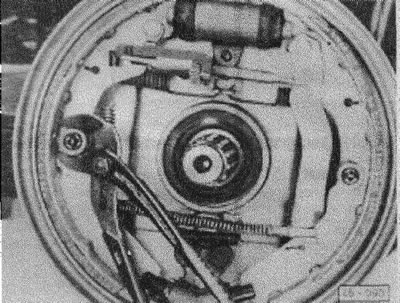
(46-393) unhook the pressure springs with a gas wrench.
Disconnect the handbrake cable from the brake lever.
Unhook the lower deflector spring.
Unhook the setting lever spring.
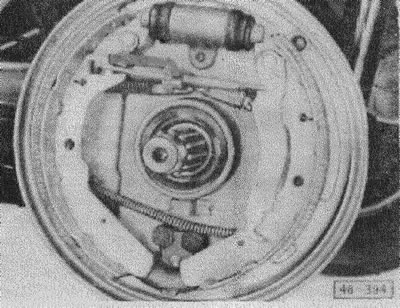
(46-394) lift the brake pads from the lower support.
Unhook the return springs at the top with combination pliers, remove the brake pads with the pressure rod.
Attention! Do not step on the brakes so that the piston does not pop out of the cylinder.
Installation
Attention! Be sure to replace the brake pads along the axles, i.e. at both sides. Use overlays of the same quality only.
Check wheel brake cylinder for leaks. To do this, remove the protective cap. If moisture is found under the cap, the cylinder should be sorted out or replaced.
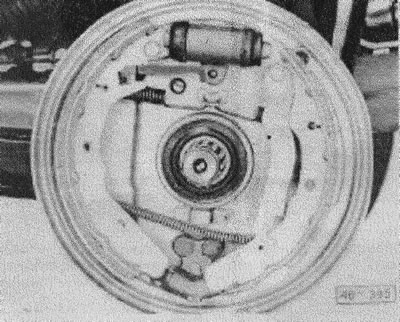
(46-395) insert the brake pads with the upper deflector springs. Install correctly: the ends of the spring with a long arm must face the cylinder.
Install the chocks on the bottom support.
Lightly grease the threads of the pressure rod. The setting gear should turn easily.
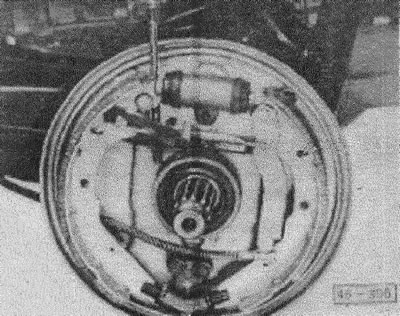
(46-396) lift the trim with a screwdriver and insert the pressure rod. The bevel on the bushing and the longer push rod trunnion point towards the casing.
Install pressure springs with plate.
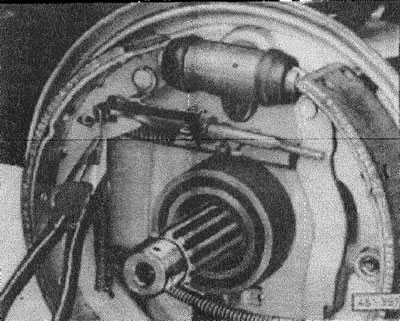
(46-397) engage the setting lever spring.
Attach the spring to the brake lever.
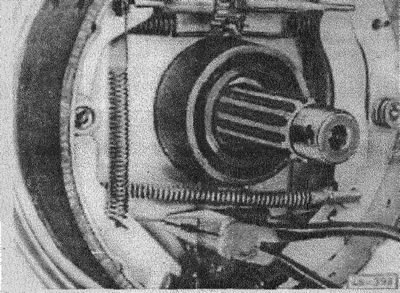
(46-398) attach the lower deflector spring. The longer end of the spring should face the cylinder.
Carry out basic installation of the rear wheel brakes, see below.
Install the brake drum with the rear wheel hub, tighten the axle nut, see Fig. "Dismantling and installation of the brake drum".
Fasten the wheel, lower the car, tighten the wheel bolts crosswise with a torque of 180 Nm.
Tighten axle nut to 350 Nm and cotter pin. If the cotter pin does not go through, continue to tighten the nut.
Attention! When tightening the axle nut, the vehicle must be on its wheels, otherwise an accident may occur.

Visitor comments